List of Contributors xi
Preface xv
1 The Gastrointestinal Tract of Fish 1
Arun Kumar Ray and Einar Ringo
1.1 Introduction 1
1.2 Anatomy of GI tract 2
1.3 Stomach and intestinal bulb 3
1.4 Pyloric caeca 5
1.5 Intestine 6
1.6 Endogenous inputs of digestive secreta 9
1.7 Luminal pH 10
1.8 Passage rate and residence time 10
1.9 Acknowledgements 10
2 Immune Defences of Teleost Fish 14
Andrew Foey and Simona Picchietti
2.1 Introduction 14
2.2 Innate immunity 15
2.3 Antigen-specific adaptive immunity 18
2.4 Cytokines drive immune responsiveness 22
2.5 Immune tissues 23
2.6 Mucosal immunity 32
2.7 Common pathogens infecting teleosts: what immune responses are required? 36
2.8 Future considerations 39
2.9 Conclusion 40
3 Gastrointestinal Pathogenesis in Aquatic Animals 53
Jarl Bogwald and Roy Ambli Dalmo
3.1 Introduction 53
3.2 Vibrio spp. 54
3.3 Aeromonas spp. 61
3.4 Yersinia ruckeri 63
3.5 Edwardsiella spp. 63
3.6 Piscirickettsia salmonis 64
3.7 Pseudomonas anguilliseptica 65
3.8 Photobacterium damsela subsp. Piscicida (Pasteurella Piscicida) 65
3.9 Streptococcosis 66
3.10 ‘Candidatus arthromitus’ 66
3.11 Mycobacterium spp. 66
3.12 Conclusion 68
4 The Gut Microbiota of Fish 75
Jaime Romero, Einar Ringo and Daniel L. Merrifield
4.1 Introduction 75
4.2 The importance of the microbiota 84
4.3 Composition of the microbiota in early life stages 86
4.4 Factors that influence microbiota composition 88
4.5 Conclusion 93
5 Methodological Approaches Used to Assess Fish Gastrointestinal Communities 101
Zhigang Zhou, Bin Yao, Jaime Romero, Paul Waines, Einar Ringo, Matthew Emery, Mark R. Liles and Daniel L. Merrifield
5.1 Culture-dependent approaches 102
5.2 Molecular techniques 106
5.3 Fluorescence based methods 115
5.4 Electron microscopy 115
5.5 Microbial activity and functionality 117
5.6 Summary 120
5.7 Acknowledgements 120
6 Indigenous Lactic Acid Bacteria in Fish and Crustaceans 128
Daniel L. Merrifield, Jose Luis Balcazar, Carly Daniels, Zhigang Zhou, Oliana Carnevali, Yun-Zhang Sun, Seyed Hossein Hoseinifar and Einar Ringo
6.1 Introduction 129
6.2 Lactic acid bacteria 130
6.3 Salmonidae 130
6.4 Gadidae 141
6.5 Clupeidae 143
6.6 Anarhichadidae 143
6.7 Acipenseridae 143
6.8 Percidae and sciaenidae 144
6.9 Moronidae 145
6.10 Sparidae 145
6.11 Pleuronectiformes 146
6.12 Cyprinidae 146
6.13 Channidae 149
6.14 Siluriformes 150
6.15 Cichlidae 150
6.16 Serranidae 151
6.17 Rachycentridae 151
6.18 Mugilidae 152
6.19 Coastal Fish 152
6.20 Shellfish 153
6.21 Summary 156
7 Probiotics and Prebiotics: Concepts, Definitions and History 169
Helene L. Lauzon, Arkadios Dimitroglou, Daniel L. Merrifield, Einar Ringo and Simon J. Davies
7.1 Introduction 169
7.2 The probiotic concept and history 170
7.3 The prebiotic concept and definition 174
7.4 Synbiotics 180
7.5 Summary 180
8 Probiotic Modulation of the Gut Microbiota of Fish 185
Daniel L. Merrifield and Oliana Carnevali
8.1 Introduction 185
8.2 Bacillus spp. 187
8.3 Lactic acid bacteria (LAB) 192
8.4 Other probionts 206
8.5 Probiotic colonization? 210
8.6 Conclusion and future perspectives 213
8.7 Acknowledgements 214
9 Probiotic Applications in ColdWater Fish Species 223
Helene L. Lauzon, Tania Perez-Sanchez, Daniel L. Merrifield, Einar Ringo and Jose Luis Balcazar
9.1 Introduction 223
9.2 Salmonidae 225
9.3 Gadidae 234
9.4 Pleuronectiformes 240
9.5 Percidae 245
9.6 Conclusion 245
10 Probiotic Applications in Temperate and Warm Water Fish Species 253
Oliana Carnevali, Yun-Zhang Sun, Daniel L. Merrifield, Zhigang Zhou and Simona Picchietti
10.1 Introduction 253
10.2 European sea bass (Dicentrarchus labrax L.) 255
10.3 Gilthead sea bream (Sparus aurata L.) 258
10.4 Probiotic applications in sole spp. 262
10.5 Groupers 266
10.6 Tilapia 269
10.7 Carps 272
10.8 Zebrafish (danio rerio) 275
10.9 Catfishes 277
10.10 General conclusions 279
11 Probiotic Applications in Crustaceans 290
Mathieu Castex, Carly Daniels and Liet Chim
11.1 Introduction 290
11.2 Main microorganisms evaluated and used as probiotics in crustacean aquaculture 293
11.3 Probiotic modes of action 300
11.4 Related benefits in crustacean aquaculture 308
11.5 Conclusion 318
12 Can Probiotics Affect Reproductive Processes of Aquatic Animals? 328
Giorgia Gioacchini, Elisabetta Giorgini, Lisa Vaccari and Oliana Carnevali
12.1 Introduction 328
12.2 The fish reproductive system 329
12.3 Broodstock reproductive dysfunctions 331
12.4 Reproduction and metabolism 332
12.5 The effects of probiotic applications on fish reproduction 333
12.6 Concluding remarks 341
12.7 Acknowledgements 341
References 341
13 Issues with Industrial Probiotic Scale-up 347
Mathieu Castex, Henri Durand and Bernadette Okeke
13.1 Introduction 347
13.2 Scaling-up guidelines 349
13.3 Mode of administration 354
13.4 Probiotic registration 357
14 Prebiotics in Finfish: An Update 360
Einar Ringo, Arkadios Dimitroglou, Seyed Hossein Hoseinifar and Simon J. Davies
14.1 Introduction 360
14.2 Salmonidae 361
14.3 Gadoids 365
14.4 Acipenseridae 365
14.5 Cyprinidae 369
14.6 Siluriformes 376
14.7 Moronidae 378
14.8 Sparidae 380
14.9 Cichlidae 384
14.10 Sciaenidae 384
14.11 Other fish species 387
14.12 Synbiotics 389
14.13 Concluding remarks and further perspectives 393
15 Prebiotic Applications in Shellfish 401
Carly Daniels and Seyed Hossein Hoseinifar
15.1 Introduction 401
15.2 Use of prebiotics in shellfish aquaculture 402
15.3 Prebiotic benefits 409
15.4 Conclusion 414
16 Live Feeds: Microbial Assemblages, Probiotics and Prebiotics 419
Jose Pintado, Miquel Planas and Pavlos Makridis
16.1 Introduction 419
16.2 Bacterial aspects of live feed 421
16.3 Bacterial control of live feed cultures 424
16.4 Enrichment of live feed and microbial implications 425
16.5 Probiotics in live feed production 425
16.6 Bioencapsulation of probiotics in live food and delivery to larvae 430
16.7 Prebiotics and synbiotics in live feed 435
16.8 Conclusions and future perspectives 436
References 437
Index 443
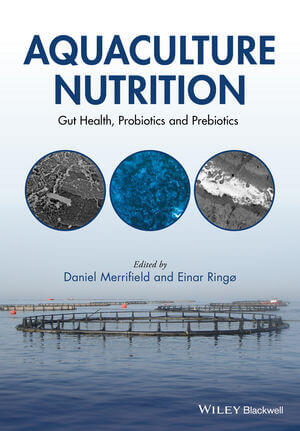

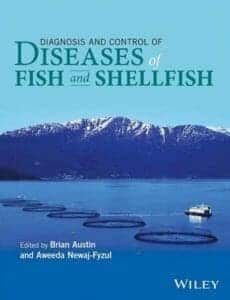
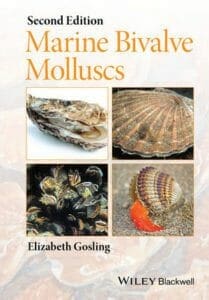
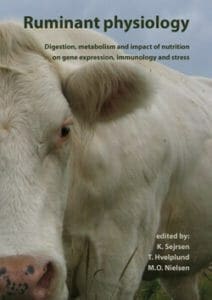
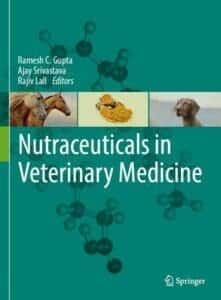

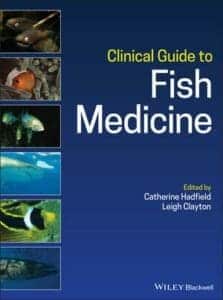
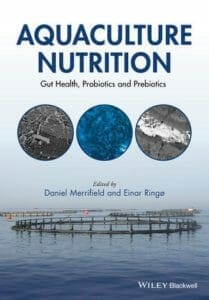





![Ettinger’s Textbook of Veterinary Internal Medicine 9th Edition [PDF+Videos] Ettinger’s Textbook of Veterinary Internal Medicine 9th Edition [True PDF+Videos]](https://www.vet-ebooks.com/wp-content/uploads/2024/10/ettingers-textbook-of-veterinary-internal-medicine-9th-edition-100x70.jpg)

![Textbook of Veterinary Diagnostic Radiology 8th Edition [PDF+Videos+Quizzes] Thrall’s Textbook of Veterinary Diagnostic Radiology, 8th edition PDF](https://www.vet-ebooks.com/wp-content/uploads/2019/09/textbook-of-veterinary-diagnostic-radiology-8th-edition-100x70.jpg)






